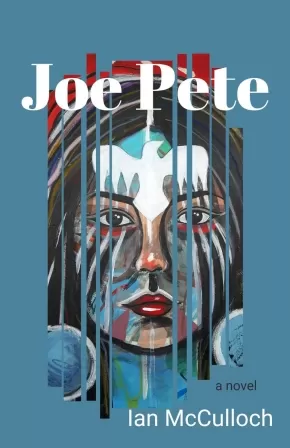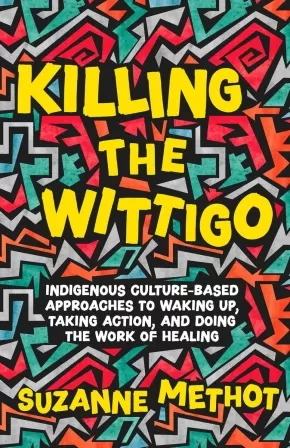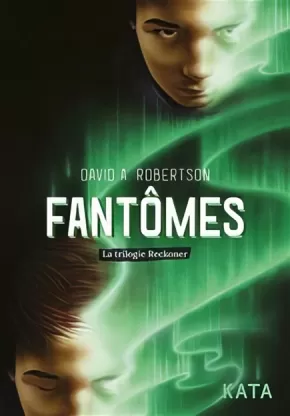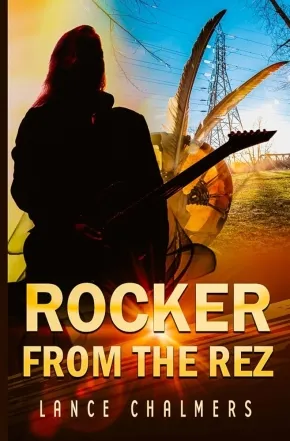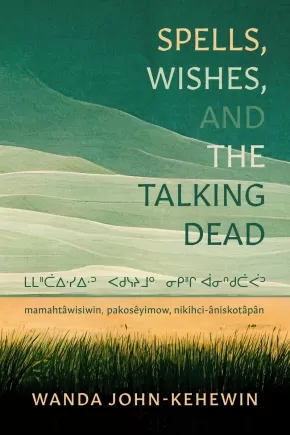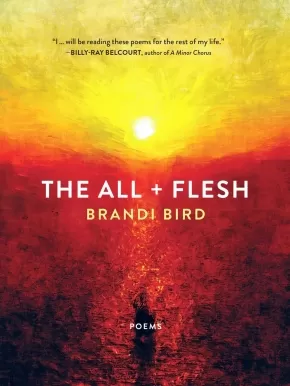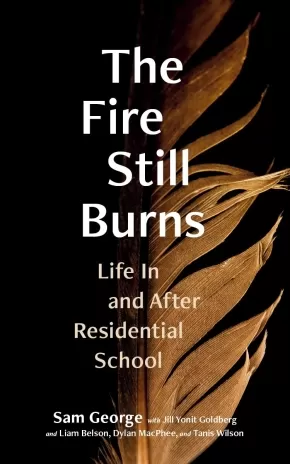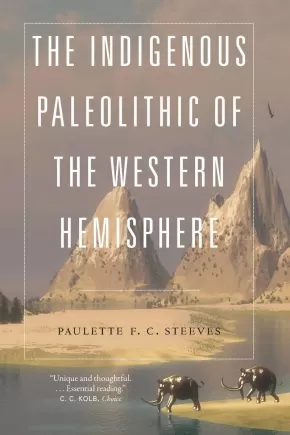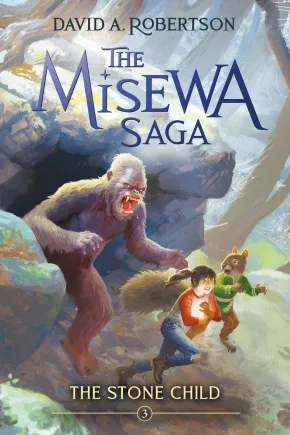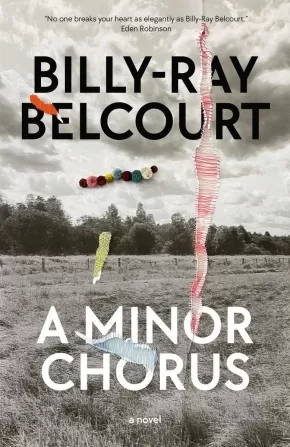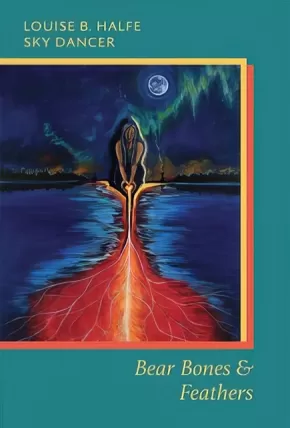Cree (Nehiyawak)
Synopsis:
A multi-generational story of loss, war, community, survival, perseverance, and renewal.
Joe Pete and her cousin Simon will find more than they anticipated buried beneath the snow as they search for her missing father. Their journey will unlock the ancestors and spirits embedded in the present who call back to a past marked by war and kinship, by conflict and wisdom that continue to contour their trajectory towards the future.
Additional Information
300 pages | 5.50" x 8.50" | Paperback
Synopsis:
An unflinching reimagining of Legacy: Trauma, Story, and Indigenous Healing for young adults.
Written specifically for young adults, reluctant readers, and literacy learners, Killing the Wittigo explains the traumatic effects of colonization on Indigenous people and communities and how trauma alters an individual’s brain, body, and behavior. It explores how learned patterns of behavior — the ways people adapt to trauma to survive — are passed down within family systems, thereby affecting the functioning of entire communities. The book foregrounds Indigenous resilience through song lyrics and as-told-to stories by young people who have started their own journeys of decolonization, healing, and change. It also details the transformative work being done in urban and on-reserve communities through community-led projects and Indigenous-run institutions and community agencies. These stories offer concrete examples of the ways in which Indigenous peoples and communities are capable of healing in small and big ways — and they challenge readers to consider what the dominant society must do to create systemic change. Full of bold graphics and illustration, Killing the Wittigo is a much-needed resource for Indigenous kids and the people who love them and work with them.
Educator Information
Recommended for ages 12 to 17.
The adult version of this book can be found here: Legacy: Trauma, Story, and Indigenous Healing
Additional Information
160 pages | 5.50" x 8.50" | Paperback
Synopsis:
Meurtres mystérieux, silhouettes obscures et le train-train quotidien à la polyvalente. La vie à Wounded Sky peut être dure surtout lorsque la communauté vient de perdre leur héros. Cole Harper est mort. Reynold McCabe est vivant et libre. Les laboratoires Mihko ont rouvert le centre de recherche et travaillent à fabriquer et à militariser le virus qui a décimé la population. Des personnes sont portées disparues et la communauté a été mise en quarantaine. Désespérée, Eva fait un pacte avec un animal qui parle. Mais, pendant ce temps, l’étau se resserre sur les membres de la communauté qui sont prisonniers de leur propre maison. Le temps presse.
Educator & Series Information
Recommended for ages 13+
This book is the third book in David Robertson's The Reckoner trilogy (La trilogie Reckoner).
This book is available in English: Ghosts
Additional Information
264 Pages
Synopsis:
This inspiring introduction to activism and social justice for young teens shows the important role music plays in changing the world, featuring:
- Musicians young teens will know and love: Beyoncé, Billie Eilish, Lizzo, Lady Gaga, Lil Nas X, and more!
- Iconic artists from past generations: readers will learn about the extraordinary impact of artists such as Nina Simone, Buffy Sainte-Marie, Neil Young, John Lennon, Bob Dylan, Tracy Chapman, and more.
- Playlists for each social justice issue: Each chapter includes a playlist with recommended songs about an area of activism, from classic tracks to contemporary hits.
In Rise Up and Sing!, Andrea Warner explores how music has contributed to the fight for social justice. Across eight areas of activism—the climate emergency, Indigenous rights, civil rights, disability rights, 2SLGBTQIA+ rights, gender equality, the peace/anti-war movement, and human rights—Warner introduces some of the artists, past and present, who have made a difference both on stage and off.
Through ground-breaking artists and iconic moments, Rise Up and Sing! shows us that a song is never just a song, and that music really does have the power to change the world.
Educator Information
Recommended for ages 12 to 17.
Includes some Indigenous content.
Curriculum Connections: Activism, Social Justice, Music
Additional Information
200 pages | 7.00" x 9.00" | Hardcover
Synopsis:
There are worse places to live than the rez. Still, family distractions make it almost impossible for Ray Smith and his three bandmates to rehearse every day. So, fresh from high school, the four move to Wakeville, Manitoba to pursue their passion for music.
A half-year later, gigs come fast and thick, with the group touring the northern province. However, too much partying and fighting leads to a bitter split between the band and their volatile bass player, Butch. Bad luck and sabotage from Butch causes gigs to dwindle, and with encouragement from his best friend and guitarist, Ray decides to join a new, well-known band, where his music career takes off. Soon he’s recognized on the street, has spots on TV, and back home he’s hailed a hero.
But success has a dark underbelly. A girl goes missing, and Ray’s loved ones are terrorized by a faceless, vengeful stalker. The question isn’t the culprit’s identity—Ray’s almost positive he knows who’s responsible. But stopping the killer before someone else is murdered…that’s a whole other story.
Additional Information
234 pages | 5.25" x 8.00"
Synopsis:
A vital collection weaving history, personal experience, and Indigenous resilience.
Spells, Wishes, and the Talking Dead: mamahtâwisiwin, pakosêyimow, nikihci-âniskotâpân is a wonder. It plays with form, space, and language, comparing meanings in English and nêhiyawêwin (Plains Cree). The reader’s attention is drawn to the restrictive and imposed constructs of English grammar, the way it boxes in interpretation and cadence.
With inspiring defiance, Wanda John-Kehewin demonstrates which magics cannot be suppressed. Broken into three sections, Spells, Wishes, and the Talking Dead looks at the sickening grip of colonialism: its ongoing detriment to the mental health of Indigenous people, its theft of language, and the scope of its intergenerational harms. The author places herself, her work, and her family’s personal experiences in the context of a historical timeline running from the so-called doctrine of discovery to the present day. Recounting the two in tandem reveals the unrelenting nature of violence and, in turn, resistance. There is great power in truth; John-Kehewin “stands in her truth” so that other survivors may stand in theirs.
Educator Information
Recommended in the Canadian Indigenous Books for Schools resource collection as being useful for grades 11 and 12 for English Language Arts, English First Peoples, Social Studies.
Content Warning: Coarse language, mature content: references to abuse, trauma, suicide.
Additional Information
96 pages | 6.00" x 9.00" | Paperback
Synopsis:
Brandi Bird's frank, transcendent poetry explores the concepts of health, language, place, and memory in this long-anticipated debut collection.
Brandi Bird's long-anticipated debut poetry collection, The All + Flesh, explores the concepts of health, language, place, and memory that connect its author to their chosen kin, blood relatives, and ancestral lands. By examining kinship in broader contexts, these frank, transcendent poems expose binaries that exist inside those relationships, then inspect and tease them apart in the hope of moving toward decolonial future(s). Bird's work is highly concerned with how outer and inner landscapes move and change within the confines of the English language, particularly the "I" of the self, a tradition of movement that has been lost for many who don't speak their Indigenous languages or live on their homelands. By exploring the landscapes the poet does inhabit, both internally and externally, Bird's poems seek to delve into and reflect their cultural lineages-specifically Saulteaux, Cree, and Métis-and how these transformative identities shape the person they are today.
I am made of centuries & carbohydrates
the development of my molars
the hunger the teeth grew
has been with me since childhood
I can't escape the mouths of others
Awards
- 2024 Poetry in English, Indigenous Voices Awards
Reviews
"Since hearing Brandi Bird at a reading in a park in summertime recite the lines, "I know / then that there is hope / until I die & then / there is other / people's hope," I have thought about them many times, they have merged with my own consciousness. That's the power of Bird's poems-they resonate at such a visceral and cerebral level that they become a part of you. The All + Flesh marks the arrival of an endlessly moving and astounding voice in Indigenous poetry. I, for one, will be reading these poems for the rest of my life." — Billy-Ray Belcourt, author of A MINOR CHORUS
"In The All + Flesh, Brandi Bird maps the psychic space between 'NDN compartmentalization' and split prairies, from bus depots to 'endocrine storms,' from LiveJournal to a living history of relocation under land theft. 'My body is not an empire but first contact happened at / birth' and 'I eat / until my mouth needles / the dark.' With exacting lucidity, Bird's lyrics chart the body as a reservoir for colonial malice, a site of resistance, and a conduit for a voice that is visceral, immediate, and uncompromising. An absolute triumph of a debut."— Liz Howard, author of Letters in a Bruised Cosmos
Additional Information
96 pages | 6.00" x 8.00" | Paperback
Synopsis:
“My name is Sam George. In spite of everything that happened to me, by the grace of the Creator, I have lived to be an Elder.”
The crimes carried out at St. Paul’s Indian Residential School in North Vancouver scarred untold numbers of Indigenous children and families across generations. Sam George was one of these children. This candid account follows Sam from his idyllic childhood growing up on the Eslhá7an (Mission) reserve to St. Paul’s, where he weathered physical, emotional, and sexual abuse. He spent much of his life navigating the effects of this trauma – prison, addiction, and challenging relationships – until he found the strength to face his past. Now an Elder and educator with the Indian Residential School Survivors Society, this is Sam’s harrowing story, in his own words. An ember of Sam’s spirit always burned within him, and even in the darkest of places he retained his humour and dignity.
The Fire Still Burns is an unflinching look at the horrors of a childhood in the Indian Residential School system and the long-term effects on survivors. It illustrates the healing power of one’s culture and the resilience that allows an individual to rebuild a life and a future.
This frank and powerful personal story of trauma and resilience will bring a greater understanding to all readers – Indigenous and non-Indigenous alike – of residential schools and the impact they had on those who were forced to attend them.
Reviews
"I am glad that Sam George has lent his voice to the many voices of survivors now surfacing from residential "schools". I love the way Sam describes his traditional life before he was forced to go to the school and then later goes back to his culture to overcome the trauma he endured. Sam did time in jail for a crime he committed, but the real crime is that our Indigenous way of life was interfered with, and that created the dysfunction in our communities. This book shows that we had it right all along – Indigenous culture is our saviour."— Bev Sellars, author of They Called Me Number One: Secrets and Survival at an Indian Residential School
"Brutally frank yet disarmingly subtle, sensitive, and funny, The Fire Still Burns by Sam George offers an unflinching look at the human dimensions of Canada’s attempted genocide of Indigenous Peoples through residential schooling." — Sam McKegney, author of Carrying the Burden of Peace: Reimagining Indigenous Masculinities through Story
Educator Information
Table of Contents
Preface / Sam George
Acknowledgments
A Note on the Text
1 Your Name Is T'seatsultux
2 In Them Days
3 Our Lives Signed Away
4 The Strap
5 A Girl Named Pearl, a Boy Named Charlie
6 Runaway
7 I Tried to Be Invisible
8 Finding Ways to Feel Good
9 On Our Own
10 Oakalla
11 Haney Correctional
12 Longshoreman
13 Misery Loves Company
14 Drowning
15 Tsow-Tun Le Lum
16 I’m Still Here
Afterword: On Co-Writing Sam George’s Memoir / Jill Yonit Goldberg
Reader’s Guide
About the Authors
Additional Information
152 pages | 5.00" x 8.00" | Paperback
Synopsis:
The Indigenous Paleolithic of the Western Hemisphere is a reclaimed history of the deep past of Indigenous people in North and South America during the Paleolithic. Paulette F. C. Steeves mines evidence from archaeology sites and Paleolithic environments, landscapes, and mammalian and human migrations to make the case that people have been in the Western Hemisphere not only just prior to Clovis sites (10,200 years ago) but for more than 60,000 years, and likely more than 100,000 years.
Steeves discusses the political history of American anthropology to focus on why pre-Clovis sites have been dismissed by the field for nearly a century. She explores supporting evidence from genetics and linguistic anthropology regarding First Peoples and time frames of early migrations. Additionally, she highlights the work and struggles faced by a small yet vibrant group of American and European archaeologists who have excavated and reported on numerous pre-Clovis archaeology sites.
In this first book on Paleolithic archaeology of the Americas written from an Indigenous perspective, The Indigenous Paleolithic of the Western Hemisphere includes Indigenous oral traditions, archaeological evidence, and a critical and decolonizing discussion of the development of archaeology in the Americas.
Reviews
Additional Information
328 pages | 6.00" x 9.00" | 2 photographs, 8 illustrations, 5 maps, 7 tables, 1 appendix, index | Paperback
Synopsis:
It's a race against time to save Eli, in this third book in the award-winning, Narnia-inspired Indigenous middle-grade fantasy series.
After discovering a near-lifeless Eli at the base of the Great Tree, Morgan knows she doesn't have much time to save him. And it will mean asking for help — from friends old and new. Racing against the clock, and with Arik and Emily at her side, Morgan sets off to follow the trail away from the Great Tree to find Eli's soul before it's too late. As they journey deep into the northern woods, a place they've been warned never to enter, they face new challenges and life-threatening attacks from strange and horrifying creatures. But a surprise ally comes to their aid, and Morgan finds the strength to focus on what's most important: saving her brother's life.
Reviews
"Girl power is front and center in the latest Misewa adventure . . . there's a lot of urgencies, a lot of action, a lot of emotion as events include satisfying reunions and heartbreaking loss." —Common Sense Media
"As readers, we were able to learn a lot about Cree culture in a way that's not achievable through textbooks . . . these books would be a great addition to any classroom library." —The Suburban
Educator & Series Information
Recommended for ages 10+
This is Book 3 in the Misewa Saga. Narnia meets traditional Indigenous stories of the sky and constellations in this epic middle-grade fantasy series from award-winning author David Robertson.
Additional Information
256 pages | 5.50" x 8.19" | Paperback
Synopsis:
A new girl at school. A mysterious crow. Weird visions he can’t explain. Grade 12 just got a lot more complicated for Damon Quinn…
“Your ancestors have called us to help you.”
“I think you have the wrong number.”
Damon Quinn just wants to get through his senior year unscathed. His mom struggles with alcohol and is barely coping with the day-to-day. Marcus and his cronies at school are forever causing him trouble. The new girl, Journey, won’t mind her own business. To make matters worse, now a mysterious crow is following him everywhere. After he is seized by a waking dream in the middle of a busy street, he’s forced to confront his mom with some hard questions: Why haven’t I met my dad? Where did we come from? Who am I?
Damon must look within himself, mend the bond with his mother, and rely on new friends to find the answers he so desperately needs. Travelling through time and space, Damon will have to go back before he can move forward.
Reviews
“Tight prose links Wanda John-Kehewin’s poetry background to [this] graphic novel for young people. It is a powerful story that proves knowing ourselves means understanding where we came from. burton’s illustrations transport the reader into Damon’s world. The contrast between the dull, dreary colours of Damon’s everyday life and the vivid, colourful realm of his dreams in particular, highlight the healing power of learning from history.” — Prairie Books Now
Educator & Series Information
Recommended for ages 15 to 18.
This is the first book in the Dreams series.
Recommended in the Canadian Indigenous Books for Schools resource collection for grades 9 to 12 for English Language Arts, Art, and Social Studies.
Content Warnings: Addictions, alcoholism, trauma.
Additional Information
80 pages | 6.50" x 10.00" | Paperback
Synopsis:
A Little Plains Cree Book for Children contains useful noun categories, phrases, and some basic rules for the Plains Cree language. Following the themes of the Saskatchewan Curriculum Guide for Kindergarten to Grade 12 on Aboriginal Languages, the content focuses on terms familiar to the First Nations Cree people of Saskatchewan. This book should also be supplemented by total physical response (TPR) methods, in addition to teaching materials such as songs, games, and flash cards. Our hope is to encourage a basic understanding of the language so that learners are able to converse with Plains Cree speakers. The best path to fluency in the Plains Cree language is immersion, but learning one word at a time is a good place to start!
Educator Information
Recommended for ages 5+
A teaching guide can be found here: nēhiyawēwin awāsi-masinahikanis: A Little Plains Cree Book for Children—Teaching Guide
Find a colouring book here: A Little Plains Cree Colouring Book: Plains Cree People
Additional Information
96 pages | 8.50" x 11.00" | Paperback
Synopsis:
An urgent first novel about breaching the prisons we live inside from one of Canada’s most daring literary talents.
An unnamed narrator abandons his unfinished thesis and returns to northern Alberta in search of what eludes him: the shape of the novel he yearns to write, an autobiography of his rural hometown, the answers to existential questions about family, love, and happiness.
What ensues is a series of conversations, connections, and disconnections that reveals the texture of life in a town literature has left unexplored, where the friction between possibility and constraint provides an insistent background score.
Whether he’s meeting with an auntie distraught over the imprisonment of her grandson, engaging in rez gossip with his cousin at a pow wow, or lingering in bed with a married man after a hotel room hookup, the narrator makes space for those in his orbit to divulge their private joys and miseries, testing the theory that storytelling can make us feel less lonely.
Populated by characters as alive and vast as the boreal forest, and culminating in a breathtaking crescendo, A Minor Chorus is a novel about how deeply entangled the sayable and unsayable can become—and about how ordinary life, when pressed, can produce hauntingly beautiful music.
Reviews
"No one breaks your heart as elegantly as Billy-Ray Belcourt. Innovative, intimate, and meticulous, A Minor Chorus is a thoughtful riot of intersections and juxtapositions, a congregation of keenly observed laments gently vivisecting the small, Northern Alberta community at its core."—Eden Robinson, author of Son of a Trickster
"The literary child of Rachel Cusk’s Outline trilogy and James Baldwin’s Giovanni’s Room, this novel builds on both, and is yet still something so new. It has the guts to centre Indigenous queer life as worthy of serious intellectual and artistic inquiry—which, of course, it always has been. We will be reading and re-reading and learning from A Minor Chorus for decades to come."—Alicia Elliott, author of A Mind Spread Out on the Ground
"An absolutely dazzling confluence of big ideas and raw emotions, told in Billy-Ray Belcourt’s singular poetic voice. A Minor Chorus is about loving, questioning, and fighting for your life, and it’s as compelling a debut novel as I’ve read in years."—Jami Attenberg, author of I Came All This Way to Meet You
"A truly exceptional novel about how the disregarded sometimes live the most remarkable lives, and how storytelling will redeem us somehow, make us less lonely. A Minor Chorus is like a song that’s over too soon; I want to play it on repeat, to memorize the words so that I can sing them to myself."—Katherena Vermette, author of The Strangers
Additional Information
192 pages | 5.20" x 7.78" | Hardcover
Synopsis:
An important language resource that helps intermediate nêhiyawêtan learners begin to understand more advanced grammar of the language.
Let’s keep on speaking Cree:
In our language is our life;
Let’s keep on speaking Cree:
In our language is our identity.
Building on mâci-nêhiyawêwin / Beginning Cree, Solomon Ratt’s first influential Cree language resource, âhkami-nêhiyawêtân / Let’s Keep Speaking Cree helps intermediate nêhiyawêtan learners begin to understand more advanced grammar of the language. The textbook is more than a language textbook though: it includes a series of the author’s original stories written in Cree, complete with comprehension questions, making it ideal for self-study as well as classroom use.
Educator & Series Information
This book builds on mâci-nêhiyawêwin / Beginning Cree.
Latest Cree language workbook by highly respected author and educator Solomon Ratt, intended for intermediate readers/speakers/
learners
First title in the Continuing Language series, which will build upon our introductory Indigenous language learner texts
Includes sections on going to the doctor, Cree culture and values, protocols, faith, humility, teachings, and more.
Additional Information
304 pages | 8.50" x 11.00" | Spiral Bound
Synopsis:
In this new edition of her powerful debut, Plains Cree writer and National Poet Laureate Louise B. Halfe - Sky Dancer reckons with personal history within cultural genocide.
Employing Indigenous spirituality, black comedy, and the memories of her own childhood as healing arts, celebrated poet Louise B. Halfe - Sky Dancer finds an irrepressible source of strength and dignity in her people. Bear Bones and Feathers offers moving portraits of Halfe's grandmother (a medicine woman whose life straddled old and new worlds), her parents (both trapped in a cycle of jealousy and abuse), and the people whose pain she witnessed on the reserve and at residential school.
Originally published by Coteau Books in 1994, Bear Bones and Feathers won the Milton Acorn People's Poet Award, and was a finalist for the Spirit of Saskatchewan Award, the Pat Lowther Award, and the Gerald Lampert Award.
Reviews
"With gentleness, old woman's humour, and a good red willow switch, Louise chases out the shadowy images that haunt our lives. She makes good medicine, she sings a beautiful song."— Maria Campbell, author of Halfbreed
Additional Information
144 pages | 5.75" x 8.50" | Paperback

